If you're reading this, you've probably decided the factory stock appearance of your car, while attractive, is rather staid and unexciting. You know that modifying your vehicle with a body kit is what feels right when it comes to adding a personal touch and making it your own. Maybe you're considering starting out slowly by adding a rear spoiler or front air dam, or going further with side skirts and even a replacement custom hood.
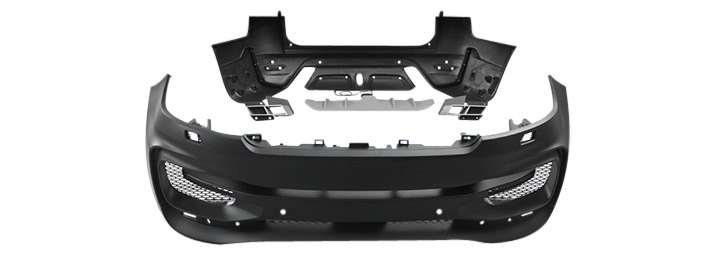
The first decision you may need to make is the type of material you may want. Body kit parts come in fiberglass, polyurethane, ABS plastic, carbon fiber and composite. Some manufacturers specialize in one or two types, while others offer various kinds. In the scope of this article, we'll look at the characteristics of each of these materials and some examples of each in order to help you make a more informed purchase.
Fiberglass
Fiberglass parts are relatively easy to produce and inexpensive to buy, but their as-delivered fit and finish may not match those of polyurethane or ABS plastic parts. Fiberglass has many benefits: it's lightweight, there's no warping during temperature changes, and paint will readily adhere to it.

The downside to fiberglass is its rigidity. This lack of flexibility makes installation more difficult, and it leaves the finished product more vulnerable to shattering and breakage. For example, if angled driveways and parking lot barriers are not approached with caution, you may end up with a cracked or broken fiberglass part. In contrast, a polyurethane part is able to flex enough to avoid damage in that same environment.
Because fiberglass parts are rougher in texture when they come out of the mold, the end user will likely need to perform additional finishing work during installation to ensure things look fully acceptable.
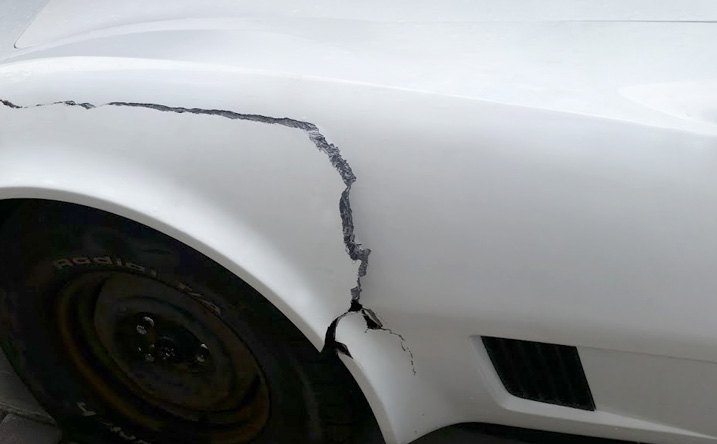
Assuming installation is done perfectly and your vehicle is driven with the utmost caution, fiberglass is still susceptible to cracking due to unanticipated road hazards and debris. As we mentioned earlier, the relatively inexpensive nature of fiberglass materials lends itself to low-grade, cheaply-made parts also being on the market. We've selected body kits from manufacturers with proven records of quality and customer satisfaction, so the fiberglass parts you'll find on our website offer better fit and finish, with the finished results looking better on your vehicle.
If you're looking for a full fiberglass body kit with a more aggressive-looking front fascia, we've got the ARK Performance Body Kit with replacement front and rear bumpers front and rear fenders, and side skirts. The VIS Racing Body Kit offers various fiberglass pieces for select German and Japanese model cars.


Polyurethane (a.k.a. 'Urethane')
Polyurethane (also known as simply "urethane") is a popular material for body kit parts. Because polyurethane is more difficult and costly to produce, parts made from it are more expensive to purchase. However, the as-delivered fit and finish level is usually better than fiberglass. As mentioned earlier, polyurethane is much more flexible than fiberglass - making it more durable and easier to install. A polyurethane part can be "coaxed" into position during installation without fear of it cracking, and the end product will flex in response to minor impacts instead of breaking apart.
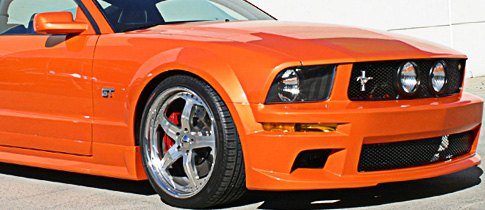
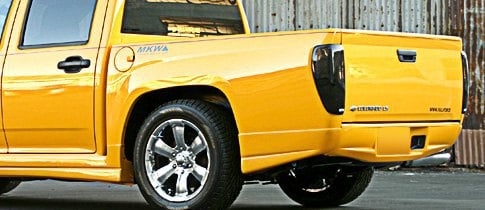
However, polyurethane is heavier than fiberglass, so polyurethane aero parts are not the best choice for racing if weight reduction is a primary goal. And while the finished surface of polyurethane parts is generally smoother and more even than fiberglass, more specialized preparation is required in order for paint to adhere properly without peeling or flaking off. Polyurethane is also susceptible to warpage under extreme heat, so environment must be taken into consideration.

Many wonder if urethane is simply another word for plastic. It is not, because urethane differs from plastic. Plastics that are blended to yield a harder surface are more likely to crack or break apart under shock than urethane material, which isn't brittle like plastic is. Polyurethane maintains elasticity and strength, because it is a true elastomer which can be stretched and elongated before returning to its original dimensions. Softer plastics can be stretched, but not very far before permanent deformation occurs. When it comes to urethane construction, we've got the Street Scene Body Kit, 3D Carbon Body Kit, Xenon Body Kit, IVS Body Kit, Extreme Dimensions Body Kit, and Couture Body Kit.
ABS Plastic
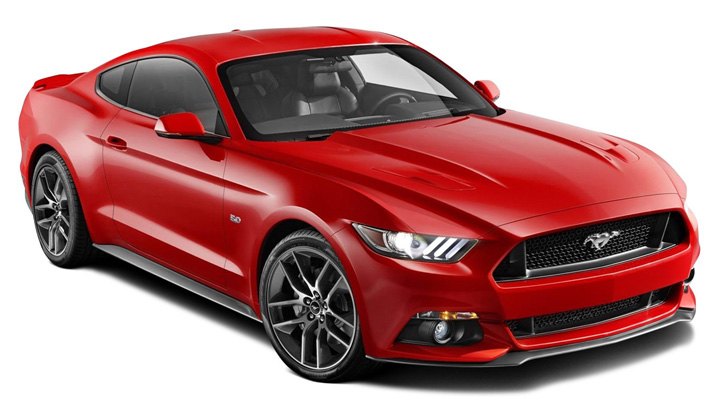
ABS plastic is a thermoplastic blend which combines the strength and rigidity of acrylonitrile and styrene polymers with the ruggedness of polybutadiene rubber. Because ABS plastic is chemical- and heat-resistant and offers good protection against dents, it's widely used by automobile manufacturers as original equipment for trim, bumper covers, and some body panels. Like polyurethane, ABS plastic is more expensive and heavier than fiberglass. However, it also offers fit and finish that's superior to fiberglass. ABS plastic is less flexible than polyurethane, but it's a very easy surface to apply paint on.
When it comes to ABS plastic body kits, we've got Razzi's Body Kit with front air dam, side skirts, and rear air dam for those interested in value pricing. For those interested in more subtle looks, E&G Classics' Effects Kit offers front and rear airdams along with a vented rocker panel set.
Carbon Fiber
Carbon Fiber, more accurately known as carbon fiber-reinforced polymer, is a polymer-like epoxy that's strengthened by actual carbon fibers. Those carbon fibers are constructed from carbon atoms bonded together in crystals that align parallel to the long axis of the fiber - an alignment that makes the end result very strong for its size and weight. And as you might guess, carbon fiber gains its distinctive appearance because the fibers are woven into the polymer "fabric".


Carbon fiber parts are extremely strong and lightweight, making them ideal for racing or any application that requires strength without the weight penalty of metal. However, carbon fiber parts are equally valued for their looks and high-performance image. And their looks are usually ready to go right out of the box, because they come clear coated and don't need to be painted - unless you prefer to.
The significant downside to carbon fiber is its higher cost of production compared to all other body kit materials. But steeper prices don't have to be a huge deterrent if you choose to mix parts you purchase. For example, choose fiberglass or urethane for front and rear spoiler add-ons, air dam, and side skirts - then spring for a carbon fiber hood.

We've got basic aero trim kits made from carbon fiber such as the Carbon Creations Body Kit (front bumper cover, rear add-on bumper cover extensions, side skirt, rear wing), the APR Performance Aerodynamic Kit (4 pieces), and the 12-piece Aero Function Body Kit with more aggressive-looking "wide body" bumper covers, side skirts, fender flares, and door caps. While most components in the kit are carbon fiber, minor bits may be made from urethane.
Composite
As the term implies, a composite is a combination of materials. These materials are usually combined to create a product with benefits that could not be realized from the materials if they were used alone.
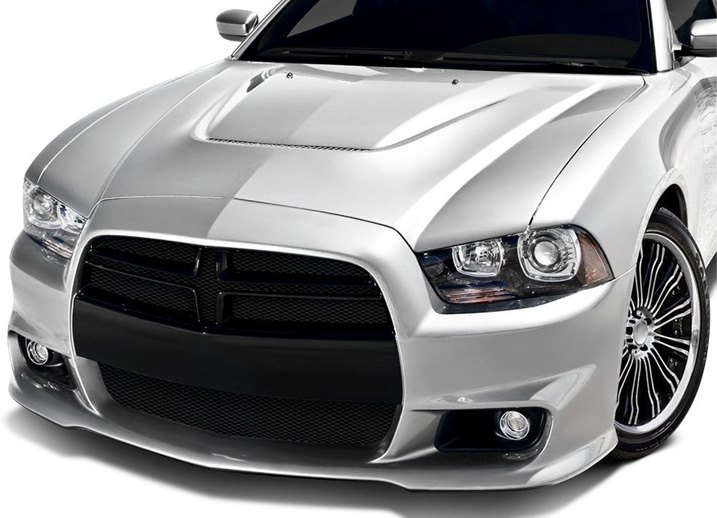
Extreme Dimension's “Duraflex” product is perhaps the most well-known example. Duraflex is a combination of fiberglass, plastic and resins that result in a product that is more flexible and durable than ordinary fiberglass, yet remains light weight. Duraflex Body Kits are available for a wide range of vehicles, from the original Datsun Z-car right up to a modern Nissan GT-R and Subaru WRX.

A final point to consider: Make sure that the shop you choose to install your body kit parts has experience installing components made from these materials. Just because a shop is well-known for excellent auto body repair does not mean they've got the expertise and finesse required to adjust, blend, and finesse the fit and finish of these parts.
Naturally, consulting with whomever will be doing the work before you make a purchase is essential because regardless of the body kit material you choose, the end results will only be as good as the quality of the installation. Taking the time to select the right kit AND the right shop will give you the stunning and unique final result you deserve.

